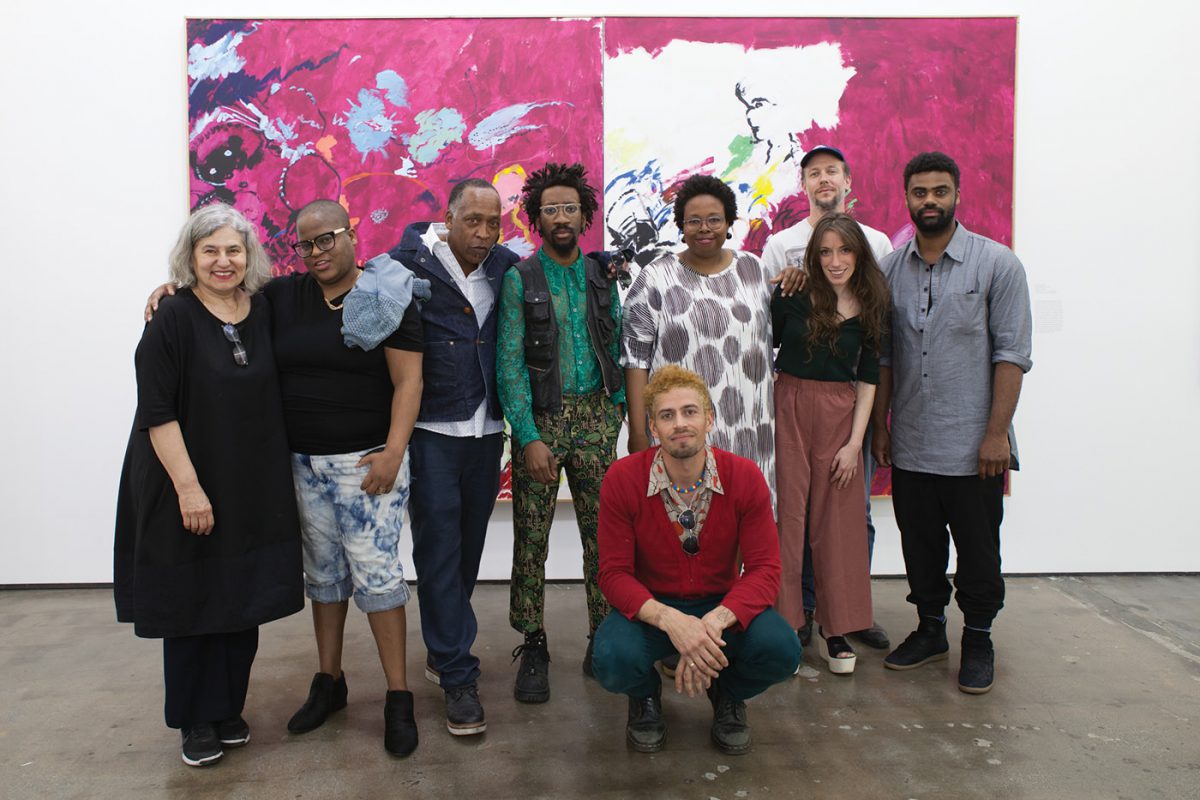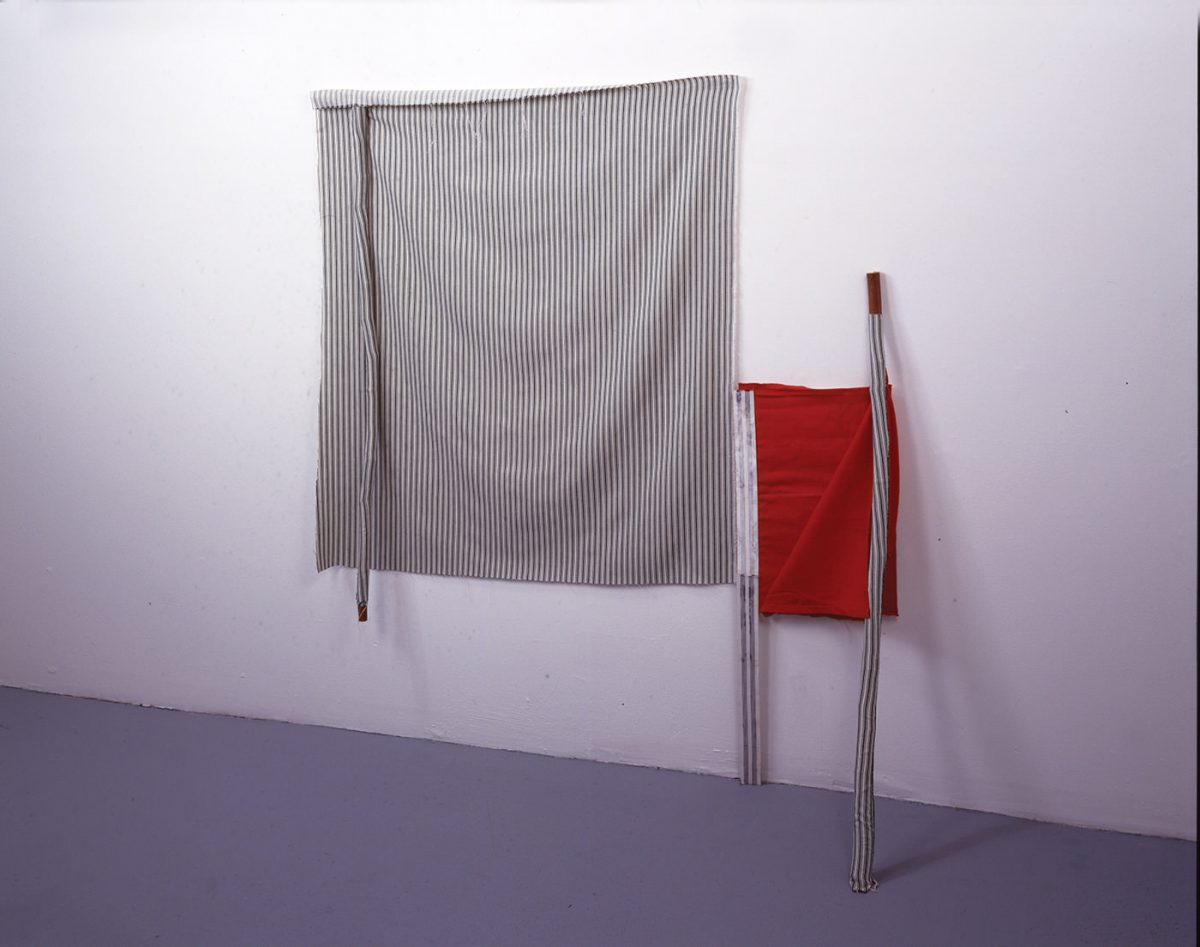Of the more than 50 contemporary art galleries that have opened in Los Angeles during the past two years, none has presented as ambitious and iconoclastic a program as the newly arrived, Swiss-based Hauser Wirth & Schimmel. As Iwan Wirth, HWS’s co-president said, “The gallery is particularly interested in developing new models for what an art gallery can be and do.” Its groundbreaking inaugural show, Revolution In The Making: Abstract Sculpture By Women 1947–2016, is the first of many exhibitions to run for extended periods of time and, extraordinarily for an institution otherwise known for high-end sales, include objects on loan from museums and collectors.
Exhibitions that solely feature art made by women are rare; exhibitions featuring women sculptors are almost non-existent. Revolution in the Making makes concrete the gallery’s unusual level of commitment to women artists; of the 60 artists HWS represent, 23 are women. As Wirth said, “Women have made extraordinary work, and we want to show that”.” The show, assembled by curators Paul Schimmel (previously chief curator at LA’s Museum of Contemporary Art) and Jenni Sorkin (art historian, critic, and Assistant Professor of Contemporary Art History at the University of California Santa Barbara), brings together 100 pieces of abstract art by 34 sculptors, most but not all on loan from museums and private collections (about 20 percent of the work is available for purchase). The exhibition emphasizes the impact and importance of work made by women during the course of the past 80 years, its scope ranging from Modernist to Contemporary.
 Hauser & Wirth partners (left to right) Paul Schimmel, Marc Payot, Manuela Wirth, Iwan Wirth Photo: Scott Rudd
Hauser & Wirth partners (left to right) Paul Schimmel, Marc Payot, Manuela Wirth, Iwan Wirth Photo: Scott Rudd Jenni Sorkin, Art historian, critic, and Assistant Professor of Contemporary Art History at the University of California, Santa Barbara. Photo: Leo Cabal Photography
Jenni Sorkin, Art historian, critic, and Assistant Professor of Contemporary Art History at the University of California, Santa Barbara. Photo: Leo Cabal Photography Installation view, ‘Revolution in the Making: Abstract Sculpture by Women, 1947-2016’ Hauser Wirth & Schimmel, 2016 Courtesy the artists and Hauser & Wirth Photo: Brian Forrest
Installation view, ‘Revolution in the Making: Abstract Sculpture by Women, 1947-2016’ Hauser Wirth & Schimmel, 2016 Courtesy the artists and Hauser & Wirth Photo: Brian Forrest Louise Bourgeois Untitled (The Wedges), 1950 Wood, painted, and stainless steel 63 x 13 1/2 x 12 in 160 x 34.3 x 30.5 cm © The Easton Foundation/ Licensed by VAGA, New York Photo: Christopher Burke
Louise Bourgeois Untitled (The Wedges), 1950 Wood, painted, and stainless steel 63 x 13 1/2 x 12 in 160 x 34.3 x 30.5 cm © The Easton Foundation/ Licensed by VAGA, New York Photo: Christopher Burke Art © The Easton Foundation/ Licensed by VAGA, New York, NY Installation view, ‘Revolution in the Making: Abstract Sculpture by Women, 1947-2016’ Hauser Wirth & Schimmel, 2016 Courtesy the artists and Hauser & Wirth Photo: Brian Forrest
Art © The Easton Foundation/ Licensed by VAGA, New York, NY Installation view, ‘Revolution in the Making: Abstract Sculpture by Women, 1947-2016’ Hauser Wirth & Schimmel, 2016 Courtesy the artists and Hauser & Wirth Photo: Brian Forrest Magdalena Abakanowicz, Wheel with Rope, 1973 National Museum in Wroclaw (Poland) Installation view, ‘Revolution in the Making: Abstract Sculpture by Women, 1947-2016’ Hauser Wirth & Schimmel, 2016 Courtesy the artists and Hauser & Wirth Photo: Brian Forrest
Magdalena Abakanowicz, Wheel with Rope, 1973 National Museum in Wroclaw (Poland) Installation view, ‘Revolution in the Making: Abstract Sculpture by Women, 1947-2016’ Hauser Wirth & Schimmel, 2016 Courtesy the artists and Hauser & Wirth Photo: Brian Forrest (Wall) Eva Hesse, Aught, 1968 University of California, Berkeley Art Museum and Pacific Film Archive; Gift of Mrs. Helen Charash (Floor) Eva Hesse, Augment, 1968 Private Collection, Germany Installation view, ‘Revolution in the Making: Abstract Sculpture by Women, 1947-2016’ Hauser Wirth & Schimmel, 2016 Courtesy the artists and Hauser & Wirth Photo: Brian Forrest
(Wall) Eva Hesse, Aught, 1968 University of California, Berkeley Art Museum and Pacific Film Archive; Gift of Mrs. Helen Charash (Floor) Eva Hesse, Augment, 1968 Private Collection, Germany Installation view, ‘Revolution in the Making: Abstract Sculpture by Women, 1947-2016’ Hauser Wirth & Schimmel, 2016 Courtesy the artists and Hauser & Wirth Photo: Brian Forrest Jackie Winsor, 30 to 1 Bound Trees, 1971–1972 / 2016 © Jackie Winsor. Courtesy Paul Cooper Gallery, New York and Hauser & Wirth Installation view, ‘Revolution in the Making: Abstract Sculpture by Women, 1947-2016’ Hauser Wirth & Schimmel, 2016; Courtesy the artists and Hauser & Wirth; Photo: Brian Forrest
Jackie Winsor, 30 to 1 Bound Trees, 1971–1972 / 2016 © Jackie Winsor. Courtesy Paul Cooper Gallery, New York and Hauser & Wirth Installation view, ‘Revolution in the Making: Abstract Sculpture by Women, 1947-2016’ Hauser Wirth & Schimmel, 2016; Courtesy the artists and Hauser & Wirth; Photo: Brian Forrest Exterior view, Hauser Wirth & Schimmel, 2016 Courtesy Hauser & Wirth; Photo: Joshua Targownik/targophoto.com
Exterior view, Hauser Wirth & Schimmel, 2016 Courtesy Hauser & Wirth; Photo: Joshua Targownik/targophoto.com The gallery’s redesigned industrial architecture underscores the significance of the individual works. The roster of artists reads like a Who’s Who across three generations, including such recent and current icons as Louise Bourgeois, Eva Hesse, Lee Bontecou, Ruth Asawa, Claire Falkenstein and Isa Genzken. The selections underscore the centrality of object-making for these women, bringing to the fore the ways they have merged sculpture’s physical demands with profound and often groundbreaking concepts. For those unfamiliar with the work, it should be noted that the selections are not truly representative of work produced by women during this time, nor entirely representative of the bodies of work these particular women have produced. There is an overall curatorial tendency to group like with like, based on the use of similar materials in an understandable but somewhat limiting attempt to bring aesthetic order to this unruly group. Regardless, the assembled work is almost overwhelming in its diversity, profound originality and beauty.
The inaugural exhibit also represents the gallery’s future intentions.; Clearly, its overarching goal is to alter radically the way the public relates to works of art. As Schimmel, a partner and vice president in the firm, has said, the model the gallery has in mind is “in some way the Kunsthalle — the non-collecting art museum.” He also likened the gallery’s role to that of foundations which are “commissioning works, creating group shows, doing education work.” Thus, HWS plans to continue presenting thematic, group, and historical exhibitions. An education lab, programmed by former MOCA education program manager Andrea Stang, will feature lectures, concerts and events for children. Wirth said he and his partners intend to create an environment that goes beyond hanging up pictures and handing out price lists. “It is not just having this storefront,” the gallery’s co-founder said. “There so much more that I’m interested in doing.” Schimmel added, “If we wanted to make a machine that sells, we’d make a nice white cube and put it up in Beverly Hills and put in things that easily fit in people’s homes.”
Central to this venture is the fact that the gallery is not the stereotypical white cube. The physical site, the gallery’s sixth location worldwide, is an integral part of the enterprise; Located downtown at 901 E. Third St., in the former Globe Mills warehouses,. the site, transformed by the firm Creative Space, repurposes a 116,000-square-foot complex that contains seven late 19th- and early 20th-century buildings. These array a wide variety of spaces around a 6,000-square-foot central courtyard with more than 23,000 square feet of exhibition space. The complex even accommodates people looking for a cup of coffee or a place to sit down rather than buy or even look at art. Says Schimmel, “We are trying to make the building not just a place for exhibitions but a place to come and sit, with a garden, a courtyard, a restaurant, a bookshop, a breezeway you can ride your bike right into. We’ll have Saturday and Sunday hours, stay open late Thursday through Saturday… We want this to be the living room for the downtown arts community.”









